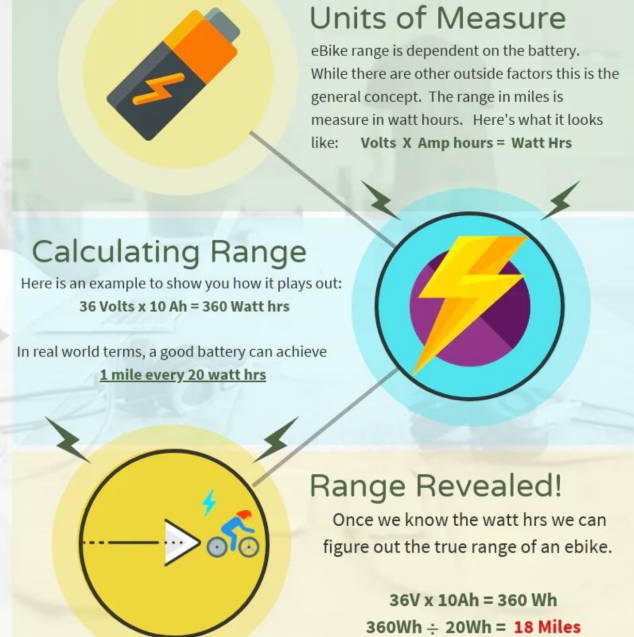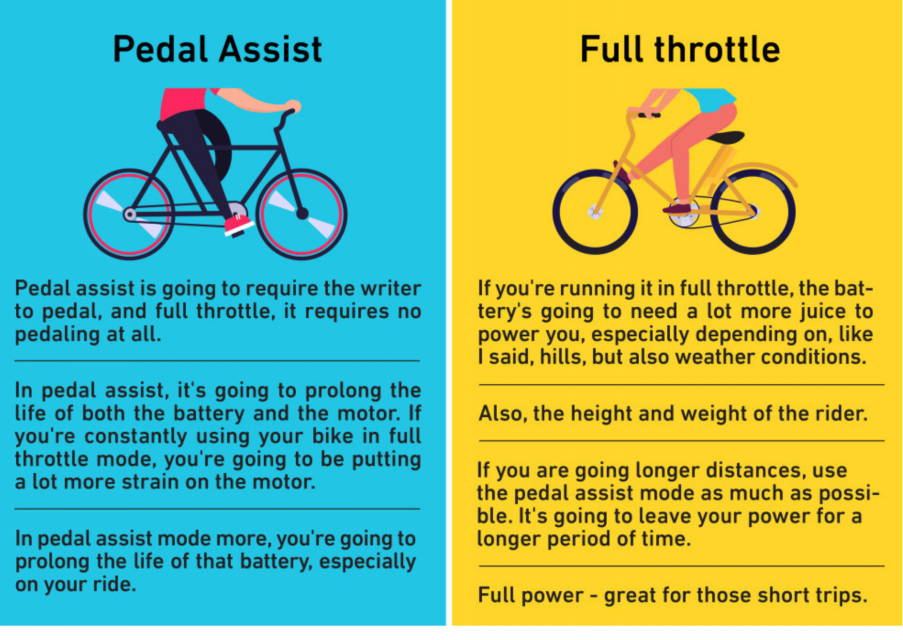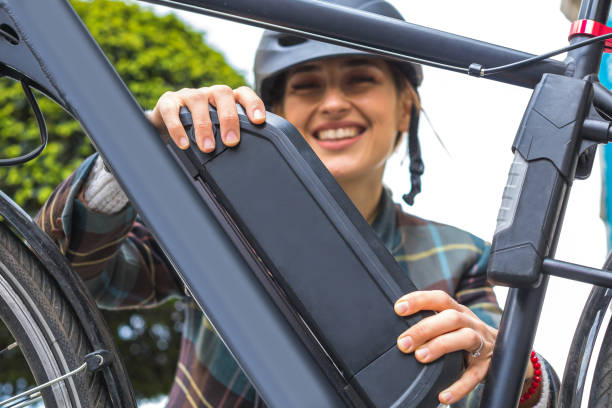
How Far Can E-Bikes Go on One Charge?
E-bikes are taking the biking industry by storm, and it's easy to see why.
Yes we know that an electric bike will be one of the most efficient ways to travel. You can save money, get some fresh air, and help the environment – what’s not to love? The only question left is how far can you go on one charge?
The answer, unfortunately, is not as simple as we would like it to be.
That said, we've curated this handy guide to give you a better idea of how far you can expect your e-bike to take you on a single charge.
Get $50 off your first order
Sign up for special offers and updates
Electric Factors – E-Bike Range Calculator
Battery Capacity
The most noticeable range factor of an e-bike is its battery capacity, or how much power it can contain, which can be used to calculate the bike's range.
Unless you're riding a more recent model, which is not very common. So, your current battery is a lithium-ion battery, the same battery that comes with phones and laptops.
You'll notice that your battery capacity won't fully charge after roughly 1000 charge cycles, which is close to the 2-year mark for a daily e-bike rider and up to the 5-year mark for occasional users or "weekend warriors." This is a normal aspect of the lithium-ion battery lifespan.
The capacity of the electric bike battery will not decrease much, but a lower capacity means less accessible power and hence a shorter range. When this becomes the case, it's time to consider getting a new battery.
However, if we're talking about a relatively new battery, we can estimate how many miles it can travel on a single charge.
It has been calculated and proven that the average e-bike battery can ride roughly 1 mile every 20-watt hours when all other parameters are neutral or average.

Battery Lifespan
Another essential feature to consider when purchasing an e-bike is the battery's lifetime, as it also affects its range. Of course, several different types of batteries have different lifespans, such as lead acid batteries and nickel metal hydride batteries.
Lead acid batteries have an average lifespan of around 300 cycles before they start to degrade. In comparison, nickel metal hydride batteries have an average lifespan of approximately 2000 cycles before degrading. And, lithium battery packs have an average lifespan of 800-1000 cycles before degradation sets in.
But these lifespans depend mainly on the age and quality of the battery in question. Therefore, the best way to determine whether or not a battery should be replaced is by conducting tests on it by running constant discharge/charge cycles.
Mechanical Factors
When it comes to how far an e-bike can go on one charge, a few mechanical factors come into play.
The first is the gearing type, and another would be the motor, which extends to the kind of tires. So let's look at how these mechanical factors play a role in the distance e-bikes can achieve.
Gearing
Different gears will affect how quickly you pedal and therefore require more or less power from the motor. Higher gears allow for lower RPMs (revolutions per minute), so they will use less battery power but may not be as fast.
Lower gears allow for higher RPMs, which will mean more battery power, but you'll also travel faster. It's worth noting that some bikes do offer two different gear settings.
These can usually be activated with a click of a button on the handlebars. If your bike has this feature, we recommend experimenting with different gears to see what speed suits you best while keeping an eye on your battery life.
Motor
Bikes with more powerful motors will generally go further than those with weaker motors. An engine rated between 250w - 500w should cover most people's needs regarding riding distances.
But, if you love long rides and don't want to worry about going too far out of your way just because the battery died, consider a more robust 750w - 1000w model instead.
That being said, heavier riders may need a more powerful motor to tackle steep hills, headwinds, and other obstacles. Lighter riders won't need anything as high-powered, though.
Type of Tire
Regarding e-bike tires, two key factors will determine how far you can go in one charge. The first is how inflated they are, and the second is how much traction they have.
Tires with low air pressure will have less grip on the road surface, meaning they won't slow down as much under heavy braking.
Conversely, underinflated tires will lose contact with the ground sooner when turning, meaning they'll wear quicker and become punctured easier.
Tips To Increase Your E-Bike Range
Lose The Extra Weight
Fat tires and powerful motors are good for going off-road, but they're extra weight you can do without when it comes to range.
Two pounds of weight is the equivalent of one mile, so if you're riding a 20-pound bike, that's four miles less range you'll have to work with.
That doesn't sound like much, but remember that e-bikes won't help you once they run out of power and eventually shut down. To make sure your electric bike has enough juice to get where you need to go - ride light!
Fully Pumped Tires
You might not be able to tell by looking at them, but flat tires will drastically reduce your e-bike range. Therefore, monitoring tire pressure levels as often as possible (once a week should suffice) is essential.
If you notice any flat spots or damage, don't hesitate to take it in for repairs right away. Also, be aware that some models offer different tire pressure levels depending on how heavy the rider is and how far they plan to go.
Correct Tires
Investing in proper bicycle tires can make all the difference in range. While there are many e-bikes on the market, each type needs a specific type of tire for optimal performance.
For example, fat tires are best suited for rugged terrain, while skinny tires are better suited for paved roads. Wider rims provide more stability while narrow rims enable more speed; knobblier treads offer better traction than slick ones.
Correct Pedal Assist Level
Most pedals assist bikes come with two or three pedal assist modes: Eco, Normal, and Turbo. Turbo mode is usually expensive and offers the most extended battery life, but it drains your battery faster.
Eco mode makes pedaling easier while giving you a longer range since it applies less power to the motor. Normal mode falls somewhere in between these two extremes.
Think about what level of pedal assistance you want before buying a bike because this level cannot be changed after purchase.

Ride Slower
Believe it or not, biking slower actually helps extend your range. In addition to helping conserve energy, pedaling slower means you'll use less battery power and generate less heat from friction which could shorten the lifespan of your drivetrain components.
Riding slower is easier said than done, though, especially when you're trying to get from point A to point B quickly. Make it easier on yourself by choosing a route with minimal traffic and following the speed limit.
A Clean and Oiled Drivetrain
Regularly cleaning and oiling your chain and derailleurs is the key to keeping your bike running smoothly.
This process may seem tedious, but it'll save you a lot of money in the long run by extending the life of your drivetrain. Plus, it'll make your bike last a lot longer.
Keep Your Bike Charged
This seems like a no-brainer, but you’d be surprised how many people forget to plug in their bikes every night.
Every day that your battery is charged for a few hours can make the difference between having to recharge in the middle of your commute and getting home with plenty of juice left over.
Conclusion
As you can see, not all e-bikes offer a similar range between charges. Their battery capacities and overall weight have a lot to do with it. For example, the heavier an e-bike is, the harder it will be to pedal and thus lower its range per charge.
All else being equal, though, lithium-ion batteries are superior to lead acid ones since they store more energy per kilogram of weight.
If you're considering buying an e-bike or upgrading your current one, keep these things in mind. We hope you've benefited from our guide as much as we've enjoyed putting it together.

